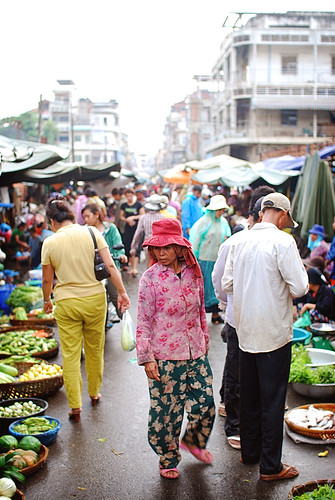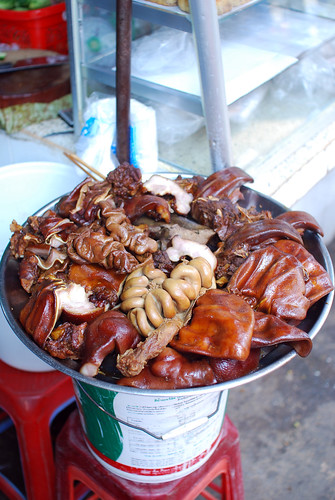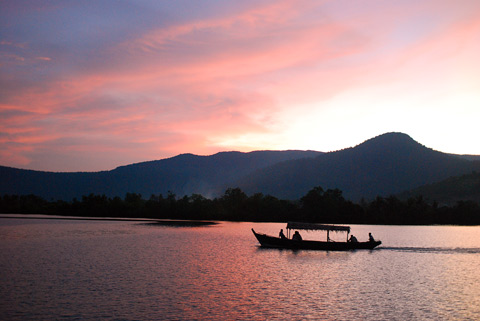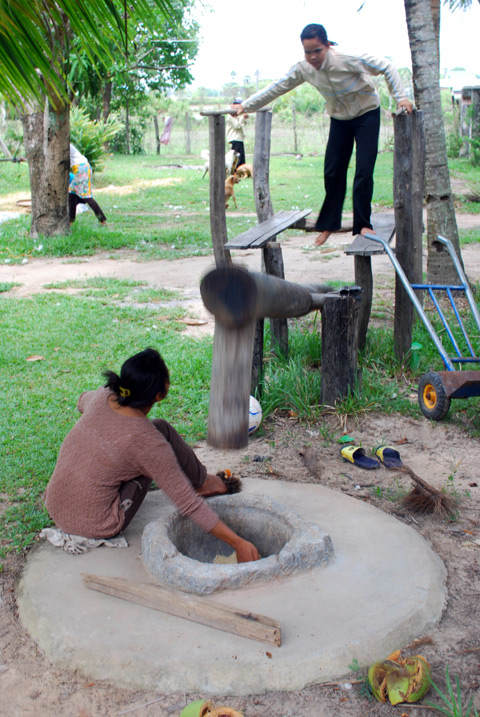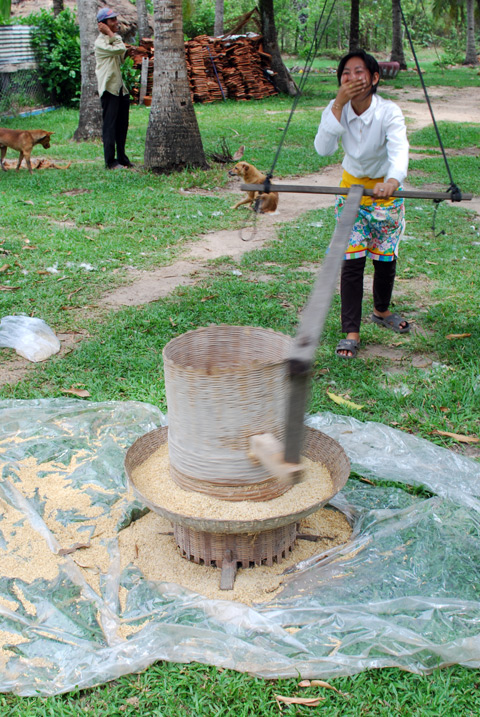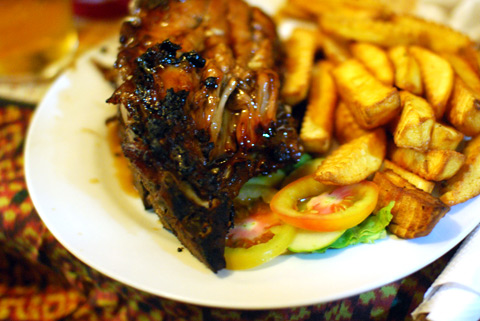It was only a matter of time before someone else picked up the gauntlet: Nyam Penh is blogging food from Phnom Penh.
Category: Uncategorized
Cambodia’s second microbrew
CARMICHAEL: So, if I were a Czech person walking in here today, I would have a Clouded Leopard Kingdom pilsner, and it would taste pretty much like what I would get back at home in Prague?
HAUPENTHAL: We try to think so.
Congratulations to Kingdom Brewery for launching another Asian pilsener and having the sheer hubris to use Comic Sans on their website. Robert Carmichael from Radio Australia has the interview. It is no mean feat to get this far: Kingdom are only the second microbrewer in Cambodia and CEO Peter Brongers deserves some credit for pulling together the funds to get this started, regardless of how the beer tastes. As the interview mentions, brewing is the easy part; it’s the marketing that’s the rub. Any tasting reports?
Psar Kandal Street Fashion
Offal Horror
Kampot sunsets
How to make Cambodian rice
You grow it, pick it, then hull it. Then you cook it in every manner imaginable. That amounts to my entire knowledge of rice production.
For a foodstuff that is central to Cambodian life and covers 90% of the total agricultural area, Phnomenon contains of very little rice information apart from the culinary end, mostly because I tend not to like stepping onto the toes of the hundreds of agriculture experts whom have succeeded in pulling Cambodia out of starvation. Keep up the good work and that donor cash flowing. There are other bloggers out there much more qualified to entertain you with tales of Cambodian agriculture.
As for the purely mechanical side of rice production, my guess is that Cambodia lacks milling capacity and unprocessed rice floods across the border into Vietnam. Otherwise, milling is by any means at the farmer’s disposal. Here is one method: hand-milling.
Hull the rice in one of these.
I have the weird effect that when I ask if I can photograph someone in Khmer, they tend to say yes, then laugh at me, partly out of embarassment, partly because no one seems to know why on earth I’d be interested.
As for the results: much poorer than you’d get out of a commercial rice mill. It’s probably trendier for me to say that artisan-produced, hand-pounded rice is fantastic but it’s not. It is wildly inconsistent and contains far more broken rice; still tasting like the rice bran rather than something more fragrant.
Crab Nostalgia
There are two imperative dishes to be eaten in Kampot; the first, pepper crab from Ta Ouv Restaurant just near the new bridge and overhanging the river. It is almost identical to the last time that I ate there. It is altogether possible that I ate crab from the exact same plate as last time. The crab is smaller but the green pepper as eucalyptus-fragrant as it was in my rose-tinted memories. The river smells as ripe as a summer ham.
The second is a cut of ribs that is possibly illegal in any other part of the civilised world. Rusty Keyhole on the riverfront in Kampot town procures a cut of pork that combines rib with fillet; meat sticky with barbecue sauce and cooked until it can be eaten with a spoon. The full plate is a ludicrous amount of pork, the type of excess that should not be undertaken lightly. The sign behind the bar warns against missionaries visiting, lest they experience pork induced apostasy.
I’m Back.
It’s for a short time but it feels physically wrong to not be writing here when I’m physically in Cambodia. My immediate impression since I last left: not much has changed. There is now an ATM located within 25 metres of the last ATM, a few more crimes against architecture have been built and communities evicted, and the government continues to find new ways to define itself as venal. I’ve already found a new beer. More to come.
The Last Appetite
I was hoping that my last post on this website would be an embittered rant against Cambodia, its malign and kleptocratic government and its local people like the last jaded hurrah of most expatriated writers as they leave Asia for richer climes. George Orwell wrote a whole book about it. Even Christopher Hitchens loves George Orwell. Coincidentally, Christopher Hitchens also wrote a whole book about that.
I can’t bring myself to do it though.
There is still too much more to write about Cambodian food and it just can’t be whittled down to one impassioned and bilious tirade. Over the past few thousand years of Cambodian food, there have only been three recipe books in English ever published on the subject and two more in French. When the global Khmer community email me for recipes for their favorite foods, I’m sorry that I haven’t covered a hundredth of Cambodia’s food and drink. Nor have I ever directly weighed in on any of the weightier issues facing Cambodia.
Thanks to everyone who commented, linked, sent me both fawning and abusive emails and asked me why I’m writing about Grape Nuts or hamburgers in Cambodia when there is something “authentic” to be eaten. Cheers to the food writers and chefs who got me started and kept encouraging me to write more widely, improve my photography and publish offline. Two years ago, I would have called you crazy if I’d been told that I could make a living out of making snide comments about trash beer and Third World food.
I started this website with a clear objective (food in Cambodia, Cambodian food) and don’t want it to become a blog about food in Cambodia and wherever else I live. So it’s an open-ended goodbye to Cambodia and Phnomenon. I’ll certainly be back and have no intention of closing the site, ever. In the meantime, I’ll be writing about food in the manner that I’ve become accustomed at The Last Appetite.
Pacific Northwest = Beertopia
Pike Place Market in Seattle has nothing to do with Cambodian food. The sign, pictured above, was the liveliest thing there at 6 in the morning. I was expecting it to be a real fish market with a good deal of people transacting in fish, as they generally do at that hour in a proper market, only to be sorely disappointed.There was no hiding that much of the local salmon had been sitting there for days (if not weeks) and crab that had been boiled in a previous era, time rendering it indistinguishable from styrofoam with a carapace.
Sorry for the scant postings, I’m heading down the west coast of America, attempting to avoid all of the places with Internet access and get to as many microbreweries as possible. My personal count for new beers tasted is now at 40. More to come.
